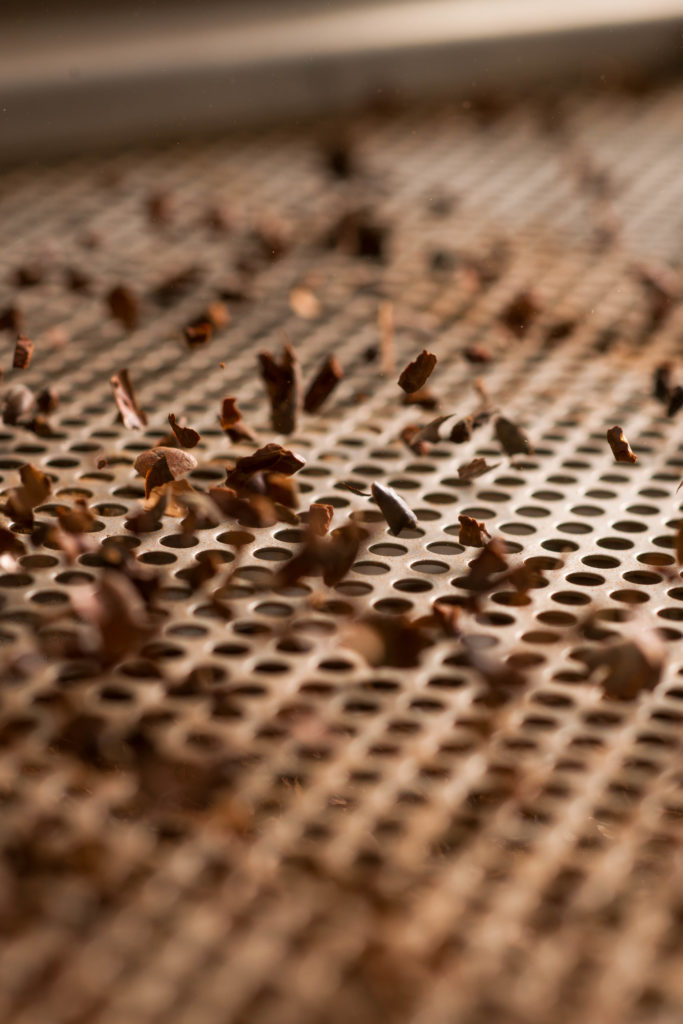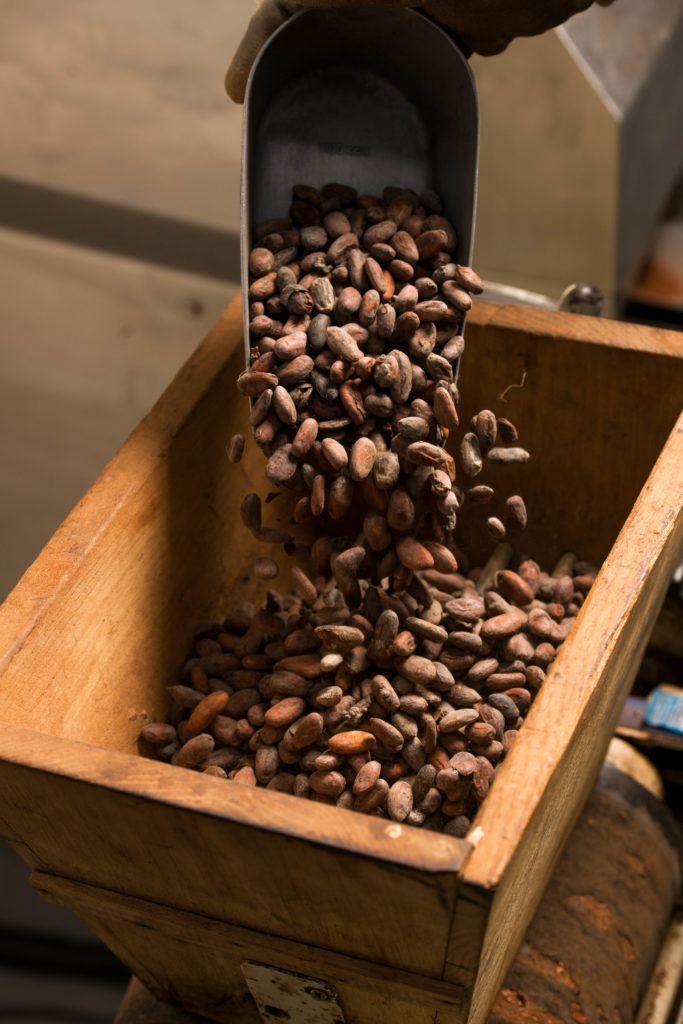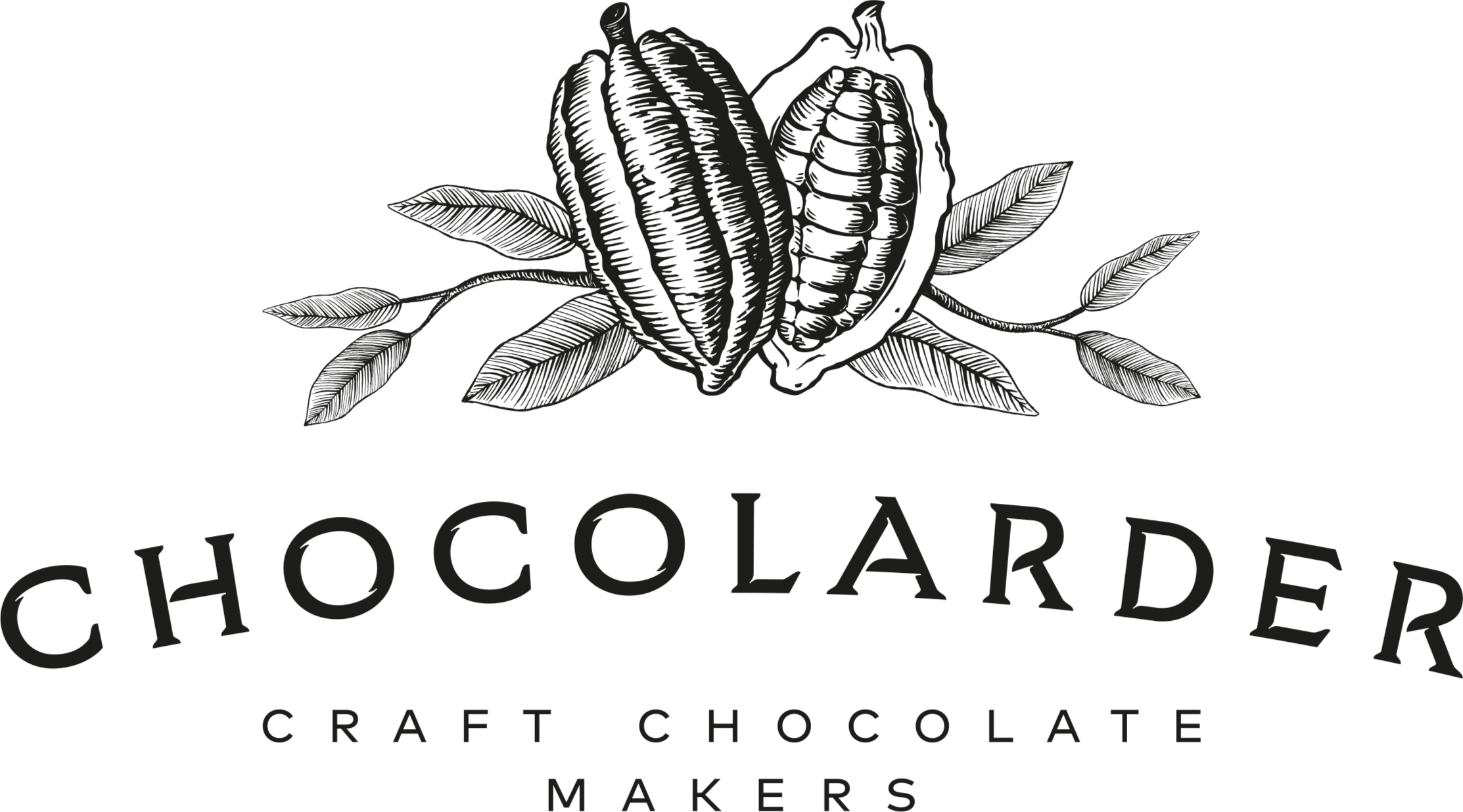
Process
Once the beans arrive from farms, they’re sorted by hand before being slowly roasted. Each bag of beans has a different roast length due to the fact that they’re all grown in slightly different environments. The beans are quickly cooled to stop the roasting at the right point.
Beans are removed from their shells and cracked into nibs. This process is called winnowing, where the heavier nibs fall to the bottom, while air lifts the lighter shell and separates the two components.
The nibs are then stoneground to fine granules, then finer still into cocoa liquor. A stone melanger, a giant stone wheel on a stone slab, crushes the sugar and cocoa particles until they are infinitesimal.
The chocolate is then conched, and this is the true alchemy of the process. The chocolate is aerated and kneaded, particles are rounded and evenly distributed throughout the chocolate, acids dissipate, flavour compounds react, and the chocolate’s character is brought to life.
When the chocolate is ready, it is poured out of the conch to be matured in huge blocks for around 40 days to develop the flavour.
After ageing, the chocolate is tempered and poured by hand into individual moulds, wrapped in our plastic-free packaging and ready to go straight to your door… or your mouth, if you’re as impatient as we are!
Machines
The beauty of the bean-to-bar chocolate world is that it’s a small industry. Although that means there aren’t very many machines designed specifically for manufacturing small batches of Chocolate, it also means that we’ve had the opportunity to get creative with the restoration of some incredible antique production machines.
Over the years, Mike has developed a bit of a mad scientist persona when it comes to our machines. He’s grown accustomed to experimenting and tinkering with new ways to streamline production and find better ways to produce chocolate. That also means that, as production has expanded, the machines have had to evolve too! Mike has had the fun and unusual task of renovating machinery that’s better suited to the tasks at hand.
Here’s a little bit about a few of our amazing machines. Not only do they feel like members of the Chocolarder family, but they’ve been saved from all over the world and transported to our factory here in Cornwall!

Kye: The antique roaster from France
In 2018, we started the Chocolarder crowdfunding campaign to restore an antique roaster for the new factory. The result was this stunning machine, lovingly nicknamed “Kye” by Mike’s grandfather after a chocolate drink that the soldiers would have during World War II. The machine was found in the middle of France via the wonders of the internet, and in its past life it had been used for roasting hazelnuts. By the time it arrived with us, it had certainly seen better days.
The machine was stripped down, cleaned to remove the oils and then blasted to remove all of the old layers of paint and primers. It was then layered back up and transformed into the magnificent machine you see today.
Mr McKracken: The antique marzipan roller
An integral part of the Chocolarder making process since 2016, Mr McKracken started life as an antique marzipan machine. Nowadays, he serves a completely different purpose—he spends his days breaking down our beans after they’ve come out of the roaster and shatters them into their separate components. This makes it easier to sort the shells from the nibs, and is great preparation for them before they go into the winnower.
Terry: From the closed Terry’s of York factory
We know what you’re think and, yes, he used to help make chocolate oranges! Terry had already had a bit of a journey before he arrived with us, as he came to us from a honey farm, where he was unsuccessfully being used to try and crush honey into sugar crystals. Here, we use him to help break down the nibs after winnowing and get them ready for the melanger.
There are many other machines, which you can visit on our factory tour, take a look here to catch the next one.
